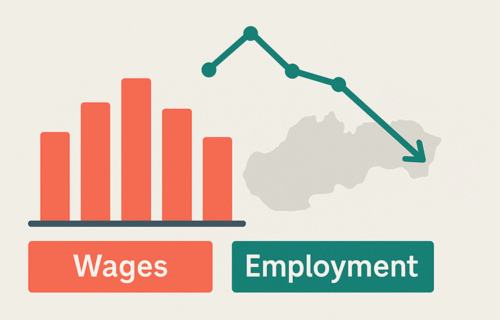Wages continued to rise across most of Slovakia’s key industries in August 2025, with six out of ten major sectors recording real growth above the inflation rate, according to new data from the Statistical Office of the Slovak Republic. However, several parts of the economy — including wholesale, construction, and industry — saw little to no improvement in employment, underscoring a continued period of labour market stagnation.
Nominal wages increased year-on-year in every monitored sector, with growth ranging from just 0.5% in motor vehicle sales and repairs to as much as 9% in food and beverage services — the strongest-performing category. Moderate gains of around 5% were recorded in construction, retail, and transport.
When adjusted for inflation, wages rose in most industries, led again by hospitality and retail. Real earnings in food and beverage services climbed by nearly 5%, while retail and accommodation registered smaller gains. By contrast, workers in vehicle services, market services, and parts of the information and communication sector saw purchasing power decline slightly, with real wages falling between 0.8% and 3.6%.
Employment figures reflected a more subdued picture. Compared with August 2024, five of the ten observed sectors reported lower employment, led by a 4% drop in wholesale trade. Smaller decreases were seen in construction, manufacturing, transport, and selected services. In contrast, the number of people employed in accommodation, retail, and hospitality continued to edge up, reflecting stronger demand in the consumer-facing economy.
Across the first eight months of the year, wages increased in nominal terms in every sector and in real terms in all but one. Employment growth, however, remained concentrated in a few industries, particularly accommodation, which recorded a 2.4% rise.
The Statistical Office noted that these figures, drawn from monthly business surveys, provide preliminary insight into short-term wage and labour market developments. Broader quarterly data, covering 19 sectors including education and healthcare, will offer a fuller picture of wage dynamics across the Slovak economy later this year.
Source: SOSR
